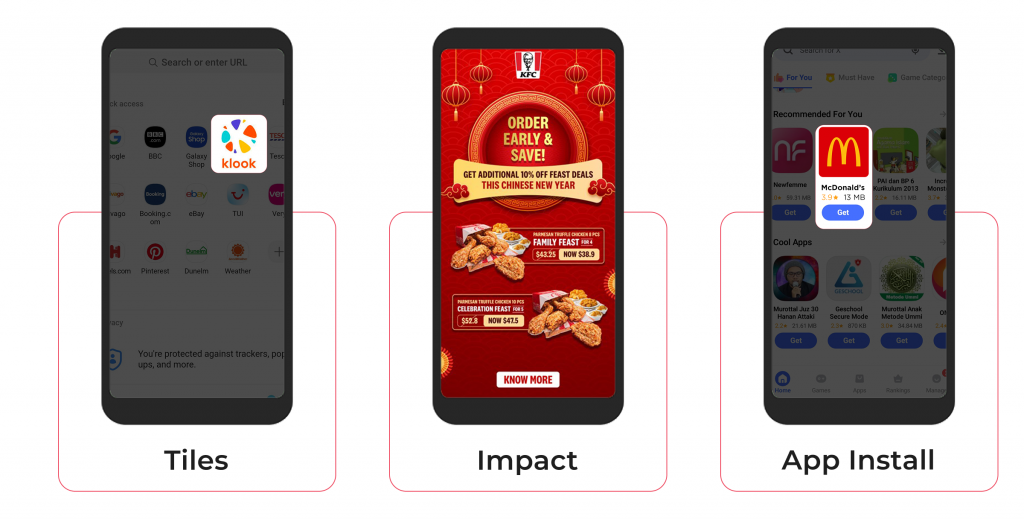Imagine a TikTok dance that goes viral overnight, only to be forgotten by dinnertime the next day. That’s the reality of engaging Gen Z and Young Millennials in today’s digital landscape. Their world is a whirlwind of fleeting trends and countless notifications, with every piece of content competing fiercely for just a sliver of their attention. To them, everything is dispensable unless you give them a compelling reason to stop, watch, and engage.
Yet, amidst this, one thing remains constant: their phones are never far from their fingertips. For publishers, this presents a canvas of endless possibilities—if they strategize advertising that breaks through the noise and resonates with these highly connected, ever-curious digital natives. It’s about creating moments that don’t just capture attention but also earn their loyalty.
This article is your go-to guide for understanding their preferences and behaviors, emphasizing the need to adapt and innovate traditional strategies to engage these increasingly influential groups effectively. Mind you, you’re also exposed to an era of cancel culture and a generation prone to taking content with a grain of salt, making it a challenge to impress this audience.
Understanding and Engaging Gen-Z and Young Millennials
In a world where brands must become master storytellers, connecting authentically with Gen Z and Young Millennials demands more than traditional advertising approaches.
Consider the models set by Nike and The New York Times. Nike connects deeply with its audience through authentic campaigns that resonate with social values. Its 2018 Colin Kaepernick campaign*, aligning marketing with sustainability and social activism, is a testament to maintaining relevance and influence.
Similarly, The New York Times shifted to a mobile-first strategy, recognizing that 40% of its traffic comes from users aged 18-34 years. This pivot doubled its digital subscriptions over three years*, showcasing how novel platforms attract younger audiences. Such examples illuminate the path for engaging these vibrant demographics effectively. Here’s how:
- Digital Natives Dominance: Engaging the 42% of the population* composed of Gen Z and Millennials is essential. They engage online for over 7 hours daily*, often making impulse buys.
- Mobile-First Optimization: Smartphones are their gateway for myriad activities. To reach them effectively, a mobile-first approach is non-negotiable.
- Personalized Content Preference: This group prefers quick, personalized content that integrates smoothly across platforms.
- Attention Span Challenges: With attention spans under 8 seconds*, overcoming fatigue is crucial. Spotify excels here with non-intrusive ad formats that captivate efficiently.
Effective strategies involve optimizing for mobile, adopting native ad formats, fostering personalized experiences and authenticity, and building trust.
Mobile Advertising for Native and Non-intrusive Digital Experience
To sustain a younger audience in the long term, balancing user experience and monetization is vital. The shift to mobile-first strategies offers a unique opportunity for OEM advertising to enhance engagement by integrating naturally into the app and mobile usage flow. Leading mobile OEMs achieve this by prioritizing non-intrusive, privacy-conscious ad formats that comply with GDPR and CCPA regulations, ensuring that user experiences are enriched while privacy is respected.
Benefits of Non-Traditional Native Ad Formats:
- Privacy Consciousness and User Data Protection: OEMs prioritize transparency and consent in data collection processes. By leveraging first-party data, they focus on contextual targeting over personal data. They ensure compliance through pre-approval processes for advertisers and prioritize stringent data protection measures, thus enhancing user trust.
- Regulatory Compliance: OEMs, especially with Android OS, adopt robust strategies to adhere to local digital advertising regulations. These OEMs comply with GDPR and CCPA by appointing Data Protection Officers (DPOs), conducting Data Protection Impact Assessments (DPIAs), and implementing stringent data encryption protocols. OEMs are enhancing their consent management frameworks to ensure transparency about data collection practices.
- Effortless Content Integration: OEM Advertising, especially for the Android OS, allows for natural ad integration within the mobile ecosystem. Native ads appear during device setup or within system apps, blending seamlessly with content and ensuring that users discover new applications without the disruption of traditional ad formats.
- Ad-blocker Resistance: Ad formats that natively align with a platform’s design inherently bypass ad-blocking tools—a strategic advantage prioritized by OEMs. By mirroring natural user behavior flows, these non-disruptive placements ensure visibility while elevating engagement metrics.
- Efficient Screen Space Use: With limited OEM screen space, ads are designed to maximize visibility and minimize disruption. In-feed or sponsored content seamlessly occupies the same space as organic content, ensuring user engagement without overwhelming the user experience.
Conclusion: Embrace the Mobile-First Evolution
As Gen Z and Young Millennials continue to reshape the digital landscape, understanding their preferences is crucial for successful engagement. With almost every Gen Z owning a smartphone, adopting strategies that resonate with their tech-savvy nature is essential. By utilising formats that feel native to the smartphone experience, publishers can see a significant boost in engagement and achieve desired outcomes. Embracing OEM Advertising is a strategic move in this mobile-centric era.

At VEVE, we have perfected the balance between monetisation and user experience with our native ad formats – Tiles, Impact, and App Install. Need help optimizing your strategy and engaging your audience more effectively? Let’s connect and navigate this digital frontier together.






